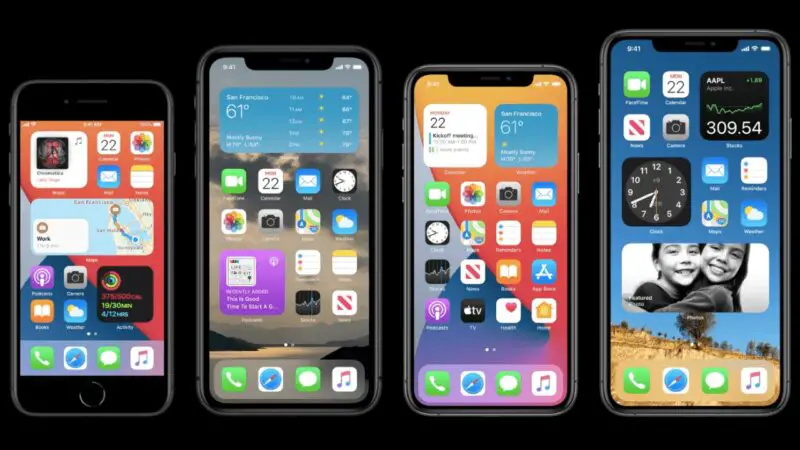Apple’s WWDC 2020 keynote ended with no hardware announcements, but we got a lot of software updates including iOS 14, so we publish a list of which iPhones will get iOS 14 update.
- How to download iOS 14 Beta and public release date
- Everything we know about Apple Glass: Price, specs, features and release date
- Apple works on an iPad keyboard with ‘touch-strips’
The list of iPhones that will get iOS 14 update
Regarding iOS 14, most of the predicted functionalities were fulfilled, to be released this fall along with the four iPhone 12 models that would be in production. Now what about pre-existing smartphones? Apple has already confirmed the list of compatible devices (first generation iPhone SE included). They are as follows:
- iPhone 11
- iPhone 11 Pro
- iPhone 11 Pro Max
- iPhone XS
- iPhone XS Max
- iPhone XR
- iPhone X
- iPhone 8
- iPhone 8 Plus
- iPhone 7
- iPhone 7 Plus
- iPhone 6s
- iPhone 6s Plus
- iPhone SE (First generation)
- iPhone SE (Second generation)
- iPod touch (Seventh generation)
The new features of iOS 14
As always, the number of additions in the latest version of iOS is endless. Hence, Apple focused on the most significant for the end user (mostly compatible with iPadOS, the operating system of the electronic tablet):
Application library: With iOS 14 applications will no longer pile up on the home screen (if we want to). They will now be automatically grouped by category, within an ‘app library’ that will also list them alphabetically.
Widgets: One of the most apparent changes is the inclusion of widgets on the main screen. We are talking about modules with updated information or direct access to their respective applications, which may vary in size.
App Clips: Developers will be able to offer previews of their apps; Instant downloads and limited features that will appear on the screen of our phone just by scanning a QR code.
Take, for example, a skateboard rental service: by reading the barcode with the iPhone camera, we will directly access the payment option, without having to go to the App Store, search for the appropriate application and download it. We could also order food from a restaurant just by looking for it on Apple Maps (among many other assumptions).
Picture in Picture: Overlapping videos to any other task on our phone will be a reality with iOS 14. Something really useful, which we already enjoyed on iPad and macOS.
Siri: The voice assistant reinvents itself in presentation and capabilities. The Siri icon will now appear at the bottom of the screen, arranging your responses as a notification (in the upper segment).
Apple wants to end the messages of the type ‘This is what I have found on the Internet’, for which it has linked the assistant with the main digital nuclei of knowledge. In addition, Siri will be able to transcribe and translate conversations in more than ten languages, in real time.
Messages: Groups are empowered with specific icons (to be selected) and conversation threads. We can also silence them totally or partially, so that only direct allusions are notified to us.
Other novelties are the anchoring of chats and Memoji adapted to the times in hand (mask through).
Maps: Apple maps offer more and better information about establishments (in addition to the integration of App Clips). We will also find routes for bicycles and electric cars, which will inform us of the closest charging stations compatible with our vehicle.
CarKey: CarPlay is updated with customizable wallpapers and ‘CarKey’, the possibility of opening the door of our car just by bringing the phone closer.
These digital ‘keys’ will be stored in ‘Wallet’ as if they were one more card, allowing us to share them with other users so they can use the car in our absence. We can even determine what functions they have access to while driving.
Default apps: iOS 14 will allow us to choose mail and navigation applications other than Mail and Safari.
We expect the release date of iOS 14 in this September, in the presentation keynote of the new iPhone and Apple Watch. Its developer version is now available.





